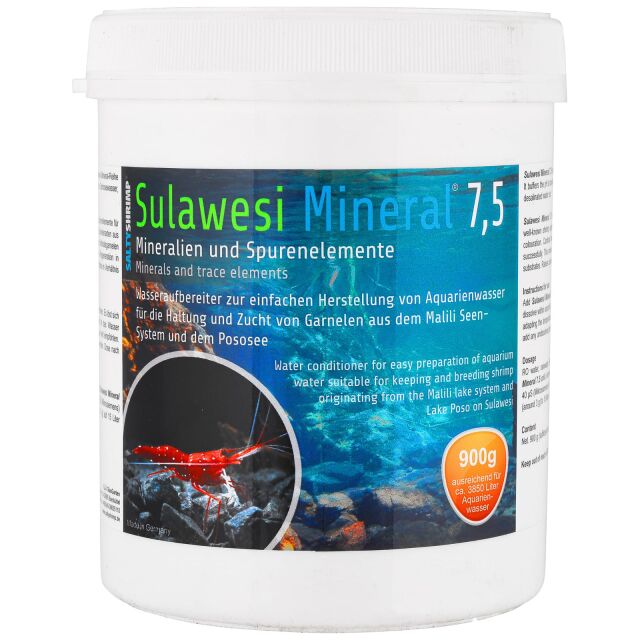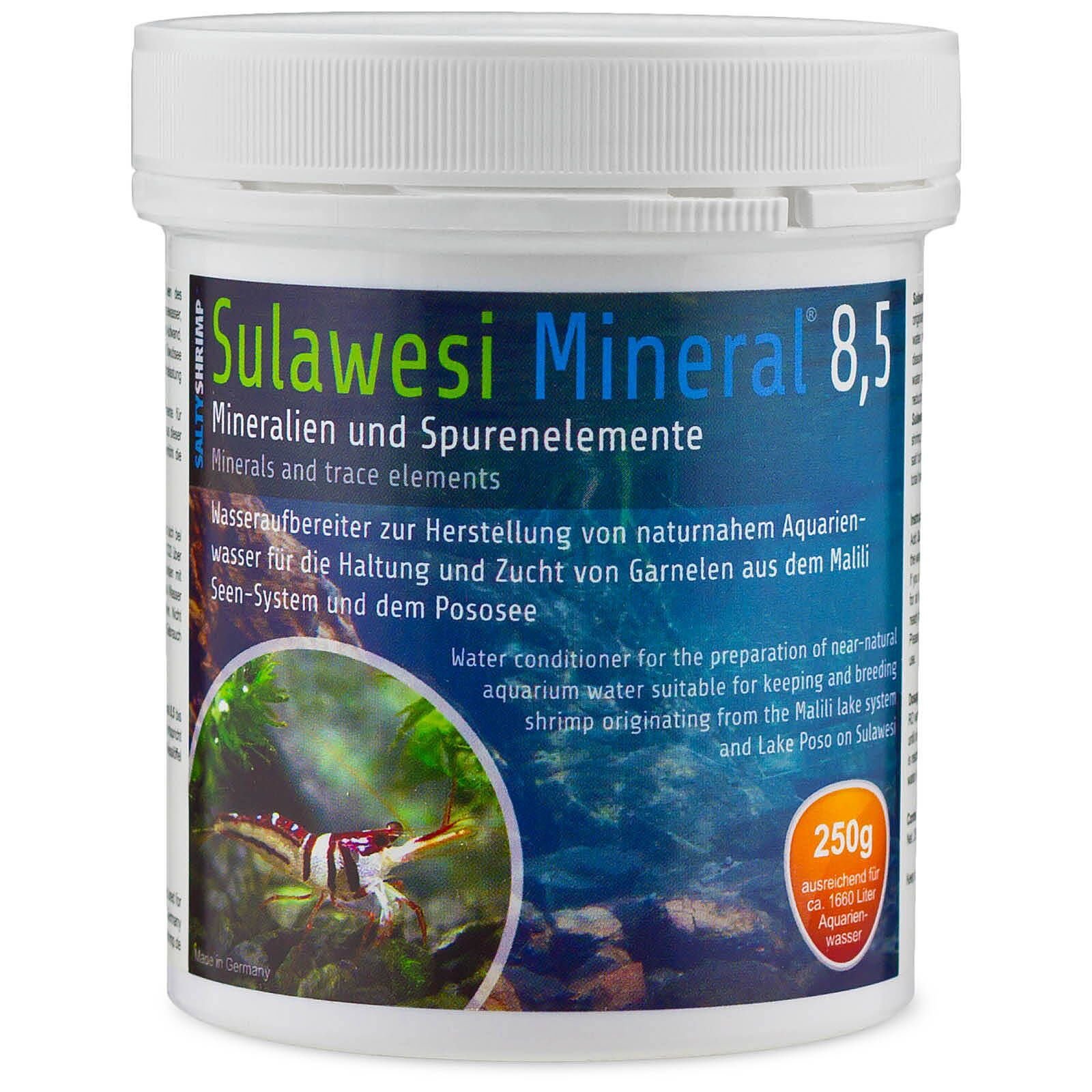Cardinal shrimp face health problems such as bacterial infections and poor water quality. Proper care is essential for their well-being.
Cardinal shrimp, known for their vibrant colors, require specific care to thrive. Maintaining optimal water conditions is crucial to prevent diseases. Regular water changes and monitoring parameters like pH and temperature help ensure their health. Overfeeding can lead to water pollution, stressing the shrimp and making them susceptible to infections.
Providing a balanced diet with high-quality food supports their immune system. Avoid overcrowding to reduce stress and aggression among shrimp. Observing their behavior and appearance daily can help detect early signs of health issues. By following these guidelines, hobbyists can maintain a healthy environment for their Cardinal shrimp.

Credit: www.amazon.com
Common Health Issues
Cardinal shrimp are beautiful and delicate creatures. They are prone to several health issues. Knowing these issues helps keep them healthy and thriving. Below, we explore common health problems they face.
Bacterial Infections
Bacterial infections are a significant threat to cardinal shrimp. These infections can be caused by poor water quality and stress. Symptoms include:
- Red or swollen spots on the body
- Loss of appetite
- Clamped tails or lethargy
To prevent bacterial infections, maintain clean water. Regularly check for ammonia and nitrite levels. Use a good water filter and perform frequent water changes.
Parasitic Infestations
Parasitic infestations are another common issue. Parasites can quickly spread in shrimp tanks. Common parasites include:
- Vorticella
- Scutariella Japonica
- Ellobiopsidae
Signs of parasitic infestations are:
- White or clear spots on the body
- Excessive scratching against surfaces
- Reduced activity
Treat parasitic infestations with medicated baths. Isolate infected shrimp to prevent spreading. Always quarantine new shrimp before adding them to the main tank.
By understanding these common health issues, you can better care for your cardinal shrimp. Keeping a close eye on their health ensures a happy and healthy shrimp tank.

Credit: www.amazon.com
Symptoms To Watch For
Cardinal shrimp, like other aquatic pets, can suffer from various health issues. Early detection is crucial. Recognizing symptoms helps in timely treatment. Below are the key symptoms to watch for.
Behavioral Changes
- Reduced Activity: Cardinal shrimp usually swim actively. If they become lethargic, it indicates a problem.
- Loss of Appetite: Healthy shrimp eat regularly. If they stop eating, this is a red flag.
- Erratic Swimming: Shrimp may swim in circles or struggle to move. This could signal an underlying issue.
- Hiding More Often: While hiding is normal, excessive hiding suggests stress or illness.
Physical Signs
- Discoloration: Watch for pale or dark spots. These indicate poor health or infection.
- White Patches: White spots on the body may point to fungal infections.
- Damaged Antennae: Broken or missing antennae can indicate aggression or disease.
- Cloudy Eyes: Cloudy or swollen eyes are often signs of bacterial infection.
- Molting Issues: Difficulty in molting can lead to stuck shells, causing distress.
| Symptom | Possible Cause |
|---|---|
| Reduced Activity | Stress, poor water quality |
| Loss of Appetite | Illness, stress |
| Erratic Swimming | Parasites, poor water quality |
| Discoloration | Infection, poor diet |
Water Quality Importance
Ensuring optimal water quality is vital for maintaining healthy Cardinal Shrimp. Poor water quality can lead to various health problems. Understanding key factors like pH, temperature, and ammonia levels is essential.
Optimal Parameters
Cardinal Shrimp thrive in specific water conditions. Maintaining these parameters keeps them healthy:
| Parameter | Optimal Range |
|---|---|
| pH Level | 6.5 – 7.5 |
| Temperature | 72°F – 78°F (22°C – 25.5°C) |
| Ammonia | 0 ppm |
| Nitrite | 0 ppm |
| Nitrate | < 20 ppm |
Testing Procedures
Regular water testing ensures your shrimp’s environment remains safe:
- Use reliable test kits for accurate results.
- Test water weekly to monitor parameters.
- Record results to identify trends and changes.
Follow these steps for effective testing:
- Collect water sample in a clean container.
- Use test kits as per instructions.
- Compare results with optimal ranges.
- Adjust water conditions if needed.
Maintaining water quality is crucial for Cardinal Shrimp health. Regular testing prevents potential issues.

Credit: www.aquasabi.com
Diet And Nutrition
Proper diet and nutrition are essential for the health of Cardinal Shrimp. A well-balanced diet helps them grow and stay active. Poor nutrition can lead to various health problems. Understanding what to feed them is crucial.
Balanced Diet
A balanced diet is key to keeping Cardinal Shrimp healthy. They need a mix of proteins, vegetables, and minerals. Here are some food options:
| Food Type | Examples |
|---|---|
| Proteins | Bloodworms, Brine Shrimp, Fish Pellets |
| Vegetables | Spinach, Zucchini, Peas |
| Minerals | Calcium Supplements, Algae Wafers |
Feed your shrimp small amounts twice a day. Ensure they eat within two hours. Remove uneaten food to prevent water contamination.
Supplementary Feeding
Besides their regular diet, supplementary feeding helps boost their health. Add these to their diet occasionally:
- Spirulina: Enhances color and boosts immunity.
- Carotenoids: Improves shell strength and color.
- Probiotics: Aids digestion and nutrient absorption.
Provide supplementary food once or twice a week. Do not overfeed as it can cause water pollution and health issues.
Maintaining a varied diet ensures your Cardinal Shrimp receive all essential nutrients. This minimizes health problems and promotes a long, healthy life.
Quarantine Practices
Quarantining new and sick Cardinal Shrimp helps maintain a healthy tank. It prevents the spread of diseases and ensures a stress-free environment. Effective quarantine practices are essential for both new additions and sick shrimp.
New Additions
Always quarantine new shrimp before adding them to the main tank. Set up a separate quarantine tank. Ensure it has similar water conditions to the main tank.
- Observe new shrimp for signs of disease.
- Quarantine for at least 2 weeks.
- Feed them a balanced diet.
- Monitor water parameters closely.
If new shrimp show signs of illness, extend the quarantine period. This ensures they do not infect other shrimp in the main tank.
Sick Shrimp
Isolate sick shrimp immediately to prevent disease spread. Set up a hospital tank with optimal conditions.
- Use a clean tank with aged water.
- Maintain stable water parameters.
- Feed them nutritious food.
- Observe them daily for recovery signs.
Seek advice from a veterinarian if the shrimp’s condition worsens. Early intervention can save your shrimp and protect the rest of the tank.
| Quarantine Step | Duration | Action |
|---|---|---|
| New Shrimp Observation | 2 Weeks | Check for diseases |
| Sick Shrimp Isolation | Until Recovery | Provide treatment |
Preventative Measures
Preventative measures are crucial for keeping Cardinal Shrimp healthy. Simple steps can help avoid many health problems. Let’s explore how to ensure your shrimp stay happy and healthy.
Regular Maintenance
Regular maintenance is key to a healthy shrimp tank. Perform water changes weekly to keep the water clean. Use a water conditioner to remove harmful chemicals.
Check the water parameters often. Keep the pH between 6.5 and 7.5. The temperature should be around 75°F (24°C). Use a reliable thermometer and pH test kit.
Clean the tank and remove uneaten food. Debris can cause harmful bacteria to grow. Use a gravel vacuum to clean the substrate.
Healthy Tankmates
Choosing healthy tankmates is essential. Avoid aggressive fish that may harm the shrimp. Ideal tankmates include small, peaceful fish.
- Neon Tetras
- Otocinclus Catfish
- Small Snails
These species are gentle and won’t compete for food. Always quarantine new tankmates before adding them to the tank. This step helps prevent diseases from spreading.
By following these preventative measures, you can ensure your Cardinal Shrimp thrive. Regular maintenance and healthy tankmates are vital for their well-being.
Effective Treatments
Cardinal shrimp are delicate creatures and can face various health problems. Knowing effective treatments helps keep them healthy and happy. This section covers two main ways to treat health issues: medications and home remedies.
Medications
Medications can be a quick and effective way to treat diseases in cardinal shrimp. Here are some common medications used:
| Medication | Purpose |
|---|---|
| Antibiotics | Treat bacterial infections |
| Antifungals | Cure fungal infections |
| Parasiticides | Kill parasites |
Always follow the dosage instructions on the package. Overdosing can harm your shrimp. It’s best to consult a vet before using any medication.
Home Remedies
Home remedies can also be effective for treating cardinal shrimp health problems. These remedies are usually safer and more natural.
- Salt Baths: Add a small amount of aquarium salt to a separate tank. Place the sick shrimp in this tank for a few minutes. This can help kill parasites and bacteria.
- Water Changes: Regular water changes can improve water quality. This helps in preventing many diseases.
- Garlic: Garlic has natural antibacterial properties. Add a small piece of garlic to the shrimp’s food to boost their immune system.
Using a combination of these remedies can often yield the best results. Always monitor your shrimp closely during treatment.
Recovery And Aftercare
Cardinal shrimp are delicate creatures. Keeping them healthy needs attention and care. After an illness, they need proper recovery and aftercare. This helps prevent future health problems.
Monitoring Progress
Monitor your shrimp daily. Look for changes in behavior and appearance. Healthy shrimp should be active and colorful. If they hide or lose color, they might be sick.
Check water parameters regularly. Use a test kit to measure pH, ammonia, nitrites, and nitrates. Keep these levels stable to ensure a healthy environment.
| Parameter | Ideal Range |
|---|---|
| pH | 6.5 – 7.5 |
| Ammonia | 0 ppm |
| Nitrites | 0 ppm |
| Nitrates | < 20 ppm |
Preventing Recurrence
Maintain clean water. Change 10-20% of the water weekly. Use a good filter to remove waste and toxins.
Feed them a balanced diet. Provide high-quality shrimp food with essential vitamins and minerals. Avoid overfeeding to prevent water pollution.
- Use a timer to feed them at the same time daily.
- Remove uneaten food after 2 hours.
Quarantine new shrimp. Keep them in a separate tank for two weeks. This prevents introducing diseases to your main tank.
Observe their behavior during quarantine. Look for signs of illness before introducing them to the main tank.
Provide hiding spots. Use plants, rocks, and caves. This reduces stress and promotes health.
Regularly clean the tank. Remove debris and clean the substrate. This prevents the buildup of harmful bacteria.
Frequently Asked Questions
How Do You Know If Your Shrimp Are Sick?
Sick shrimp show signs like lethargy, discolored or cloudy shells, and unusual swimming patterns. They may stop eating.
What Is The Milk Disease In Shrimp?
Milk disease in shrimp, also known as white muscle disease, causes white, opaque muscles. It results from nutritional deficiencies or viral infections.
How To Treat Sick Shrimp?
To treat sick shrimp, isolate them immediately. Check water quality and maintain optimal parameters. Use commercial treatments for specific diseases. Ensure proper diet and avoid overfeeding. Consult a vet if symptoms persist.
What Is The Best Food For Cardinal Shrimp?
The best food for cardinal shrimp includes high-quality algae wafers, blanched vegetables, and shrimp-specific pellets. Ensure a balanced diet for optimal health.
Conclusion
Caring for Cardinal Shrimp requires attention to their health. Prevent common issues with proper tank conditions and diet. Regular checks ensure early detection of problems. Healthy shrimp contribute to a vibrant aquarium. By following these tips, your Cardinal Shrimp will thrive and live longer.
Happy shrimp-keeping!
